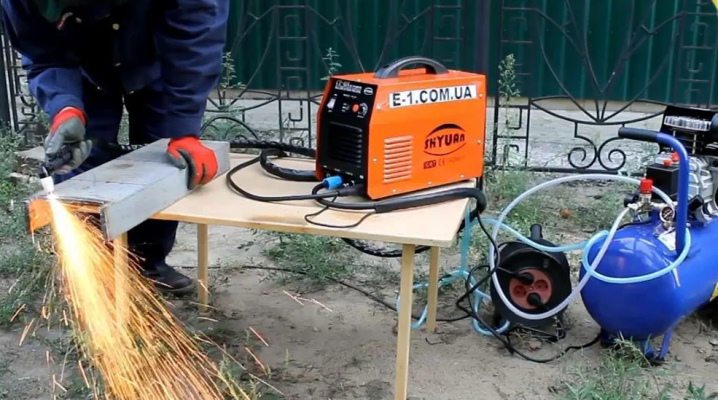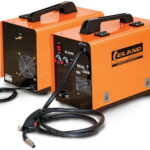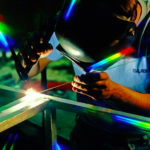Welding with a conventional tig inverter: learning to work using modern tig technology
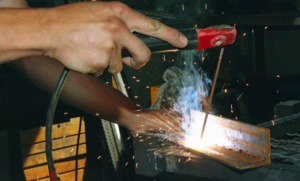
Many novice welders, and especially self-taught ones, have heard about tig technology. This is a rather complex process that is difficult to understand. In this article, we propose to familiarize yourself with the basic principles of tig technology and learn how tig welding occurs with a conventional inverter.
The content of the article
Tig welding with a conventional inverter: safety
We will not explain in detail what the welding process is, because if you are interested in tig welding, then you will understand perfectly well what it is. However, let us remind you once again that any welding process is unsafe, so you need to follow simple safety measures, namely:
- have gaiters made of durable material;
- You must have a mask to protect your eyes;
- It is recommended to have special fire-resistant work clothing and shoes.
It's sad that when doing home welding, many people neglect their own safety and then suffer because of it.
In addition to your own safety, you should not forget about the safety of the environment and comply with fire and electrical safety requirements for work and premises.
Tig welding with a conventional inverter: equipment and materials
Welding using tig technology combines two types of welding: electric arc and gas. Therefore, one of the key elements of tig welding is gas. Typically, inert gases are chosen for tig welding - argon or helium.Most often, “pure” argon or a mixture of argon and helium is used. “Pure” helium is used extremely rarely. Therefore, the first thing you need to take care of is the presence of a gas cylinder and related elements:
- reducer for gas regulation;
- rotameter for determining gas flow;
- pressure gauge for determining the gas pressure in the cylinder.
An inverter that is equipped with a tig function and an oscillator is ideal as a tig welding machine. Not every inverter has this feature, so not every inverter is suitable.
Even if an inverter is suitable for tig welding, it may not be suitable for welding a particular metal. For example, to weld aluminum or magnesium, you need a powerful professional inverter with the functions of switching to alternating current, arc stabilization, accelerated ignition, etc. For welding stainless steel or low-alloy steel, any inverter is suitable.
Another important element of tig welding on an inverter is the gas torch. If you plan to carry out simple short-term welding work, then a simple torch without an additional cooling system will do. These torches can operate at low currents of 50-150 A. For professional welding work, you will need a professional torch with an additional water cooling system. Professional burners can operate with a current of 200-600 Amps.
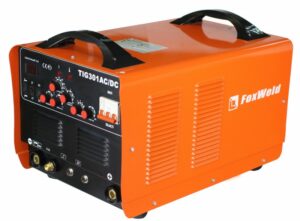
To get a reliable and high-quality seam, you need to take care of the presence of non-meltingtheirs electrodes. Most often these are tungsten electrodes with alloying elements. Tungsten electrodes come in a variety of uses, so before purchasing them, you need to make sure they are suitable for your application. Experienced welders specially sharpen these electrodes to obtain a beautiful, high-quality seam.
The seam itself in tig welding is created using filler materials, because there is not always enough material to be welded. The filler material is a special welding wire, which must be close in composition to the metal being welded.
An oscillator must be included among the accessories for tig welding on the inverter. An oscillator is a small high-voltage electric generator that is needed to create an electric arc at the beginning of welding work. Usually, if the inverter is designed for tig welding, then it has a built-in oscillator; if there is no oscillator, then it can be independently integrated into the welding machine. You can even assemble it yourself if you have the appropriate skills. A circuit diagram for a homemade oscillator is easy to find online.
Tig welding with a conventional inverter: preparation for welding
At this stage, you need to properly connect all the necessary equipment to each other. Namely:
- attach the reducer and rotameter to the gas cylinder;
- connect the hose to the reducer on the cylinder and to the inverter;
- connect the hose and burner wires to the inverter;
- connect the ground cable.
All cables, hoses and torches must be factory original. Usually at When purchasing an inverter for tig welding, you will be fully equipped.
Conclusion
When tig welding, the current strength that your machine is capable of delivering is very important. It is this parameter that determines the quality of welding. The current forms an electric arc, which generates heat to weld the metal. In this case, gas serves as a protective medium, which allows fine welding work to be performed without the risk of burning through the parts being welded.
Tig welding with a conventional inverter is not a cheap activity, because it will not be cheap to equip a conventional inverter with all the necessary equipment. Therefore, it is important to assemble such welding if there is a large volume of welding work. For example, you want to open a car body repair shop. Conventionally, if you just want to weld a hole in your beloved wife’s pan at home, then it’s easier to buy a new pan than to equip a full-fledged tig welder.
The huge advantage of tig welding with a conventional inverter is that using tig technology you can weld any metals, and not just iron, as when welding with a conventional inverter. For example, if you need to weld stainless steel, cast iron, aluminum part, etc., this can be done with tig welding.

